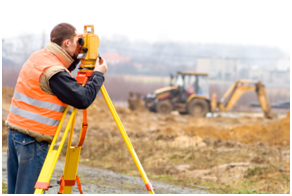Over the past few years I’ve been working on a series of courses aimed at practitioners treating patients who have both mental health and substance use disorders. The client wanted to project a realistic image of those working towards or in recovery. They also wanted to impart a sense of hope. While we had a video shoot, we were limited to stock photos for the graphics in the course.
Unfortunately, if you search for “mental health,” “alcoholism,” or “drug use,” you’ll wind up with a large collection of incredibly depressing images. The images that aren’t depressing are mocking and offensive. A search for “Alcoholics Anonymous” brings up nothing. Even a search for “therapy” or “social work” is off the mark. You’ll bring up more images related to seniors and health problems than mental health treatment.

Ultimately, my search for usable images for the courses led me into the dark underbelly of the stock photography world. In an effort to save you from such a trip, here are a few of my lessons learned.
Beware of clichés.
Clichés abound in stock photography. As I mentioned above, it’s not as easy as it might seem to find a stock photo of a recovering alcoholic. No, in stock photography, alcoholics are always at rock bottom. Those with depression are suicidal. And mental health treatment is often Freudian in nature and likely to require straitjackets.
But clichés may not always be so glaringly obvious. More recently we had a course character who was a male general contractor. When the client asked to give him an Indian name, we didn’t see any reason to object. But we didn’t think ahead to check for stock photo options. In the world of stock photography, Indian men are dressed in business suits, lab coats, or traditional Indian dress. There are few options in between. It took hours to find a passable option.
The problem is that you or your graphic artist may not be on the lookout for the stereotypes that pervade stock photography. If you are using stock photos, start looking at your options at the beginning of the project. Think about the diversity that you want to depict and check to see if there are options available.
Also keep an eye out for the biases that show up in stock photos. Communicate with your team about the types of images and stereotypes that you would like to avoid.
Choose your search terms with care.
None of my original search terms for patients who have mental health and substance use disorders were going to work. Ultimately, we had to take a step back and think about the characteristics of the people we wanted to portray in the courses. Instead of searching for terms like “depression,” “alcoholism,” “addiction,” or “schizophrenia,” we started searching for terms like “pensive,” “serious,” “thoughtful,” and “hopeful.” And these searches ultimately gave us the types of images that we needed.
If you’re having a hard time identifying the right terms, find an image that you like and check the keywords associated with it. They might give you a better idea of what to search for. You also might want to check to see if that image is in any light boxes. Maybe somebody has already done the hard work of finding similar images. If not, take a look at other images by the same photographer. Maybe the image you like is part of a series.
Be flexible.
Sometimes you’ll find that there just aren’t enough images of what you’re looking for. We ran into that issue when looking for images of support group meetings. We found about five photos that could work, but we ultimately needed more than that.
In instances like these, you could turn to Photoshop for help. For example, we found a lot of individual people who could work in a support group, so we created a graphic that arranged them in a circle on a background to make it look like they were in the same group.
There might also be symbols that represent what you’re trying to depict. For some reason, a lot of photographers like to photograph chairs in a circle. It may not have the same impact of a good shot of a group, but there are a lot of instances where the circle of chairs just might work.
Ultimately, a little creativity and out of the box thinking helped us find the images that met our client’s goals without the added expense of a custom photo shoot.
Learn about our web based training programs.
Subscribe
Related Articles
Learner Experience Evolution
For learning leaders driving change in onboarding, leadership development, sales [...]
The Power Of Learner-Centered Compliance Training: Engaging Learners, Reducing Risk
This article was written and originally posted by Brandon Hall [...]
Finding the Right Training Company
Part 2: Creating Your Shortlist Finding the right training company [...]



